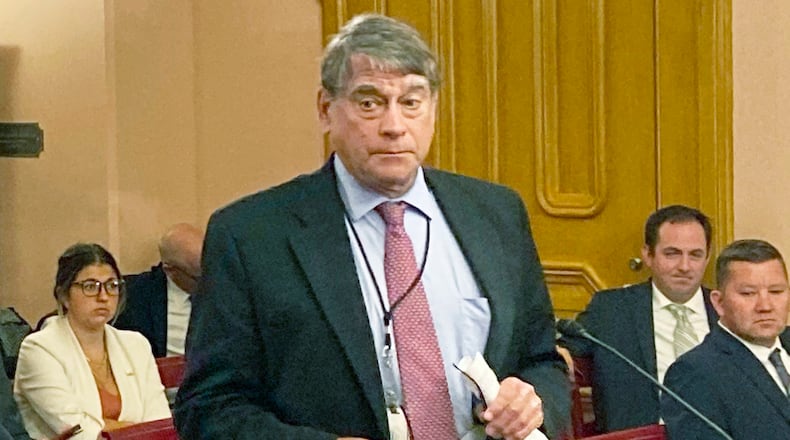And a proposal for Ohio to join the 22 other states, including Michigan and West Virginia, that automatically register voters through their Bureau of Motor Vehicles got cut out of the latest version.
“We are removing all of the language related to automated voter registration which was in the prior version,” bill cosponsor state Rep. Bill Seitz, R-Green Twp., said last week in the House Government Oversight Committee.
Seitz said he had negotiated with Senate leaders for five months, but a “motor voter” provision would not get through that chamber.
“The Senate does not yet feel comfortable with automated voter registration,” he said.
Likewise, a provision to issue free state photo ID cards is out. The Senate will probably file its own bill to do that, Seitz said.
House Bill 294 is sponsored by Seitz and state Rep. Sharon Ray, R-Wadsworth, introduced the “Enact Ohio Election Security and Modernization Act” in May. It had a second hearing in June, and didn’t get another until Nov. 17. At that third hearing, Seitz replaced the original version with a substitute bill.
Both versions of the bill would make a long list of changes to voting laws, though some are minor or procedural.
Other changes are significant. As it stands now, proposals include:
· A requirement that driver’s licenses and state ID cards issued to noncitizens must indicate that person’s noncitizen status, in line with a state constitutional amendment passed Nov. 8 barring noncitizens from voting in any Ohio election.
· Eliminating the last day of early in-person voting, the Monday before Election Day; but adding an equal number of hours to early voting during the previous week.
· Allowing absentee ballots to be returned to drop boxes from the day after voter registration ends until polls close on Election Day.
· Limiting ballot drop boxes to three per county, all at the same location: the county board of elections office.
· Keeping those drop boxes under constant video surveillance, and allowing only bipartisan teams to open them.
· Prohibiting August special elections – such as the primary for state House and Senate this year – except for a few special circumstances.
· Appropriating $7.5 million to buy electronic pollbooks.
Perhaps the biggest aid to ease of voting in the bill is allowing people to request absentee ballots online. But the absentee ballots themselves would still be mailed to the voter in paper form, which has to be mailed back or returned in person to county election offices.
Every registered voter has gotten an absentee ballot application in the mail since 2012 from the Ohio secretary of state. That was roughly 8 million applications for the Nov. 8 election. The bill would prohibit sending ballot applications in the future unless a voter specifically asks for one. Neither the secretary of state nor county boards of elections could mail unsolicited absentee ballot applications.
Representatives of several groups spoke against the bill; third hearings are generally the main forum for opponents of bills to speak.
Most of those addressing the committee opposed the limitations on ballot drop boxes, and against removal from the bill of automatic voter registration.
Jen Miller, executive director of the League of Women Voters of Ohio, said she supports online requests for absentee ballots and a few other provisions, but overall sees the bill as creating more barriers to voting.
It would create two deadlines for requesting an absentee ballot: seven days prior to an election for a paper request, 10 days for requesting one online. To avoid voter confusion, both should be seven days, she said.
Conversely, the deadline for returning absentee ballots to boards of election should be 10 days, instead of being shortened to seven, Miller said. The shorter deadline would impact military voters, she said.
Miller said grandchildren should be added to the list of relatives allowed to drop off ballots on others’ behalf.
Kayla Griffin, state director for All Voting Is Local Action, said the bill would create confusion among voters. It would make voting harder for the disabled, elderly and isolated, in rural and urban areas alike, she said.
If backers can’t steer the bill out of the House committee and a to a floor vote, then through the same process in the Senate within the next four weeks – even as legislators consider dozens of other bills during the lame-duck session – it would have to be re-filed and start all over when the 135th General Assembly convenes in January.
About the Author

